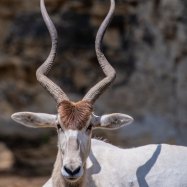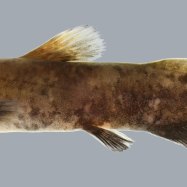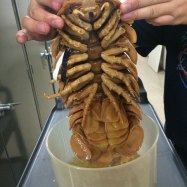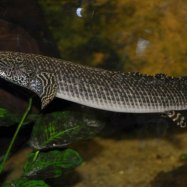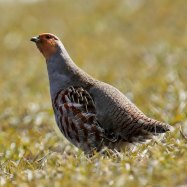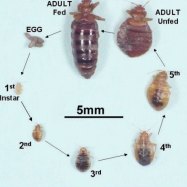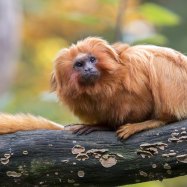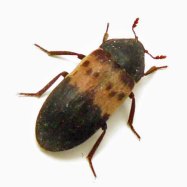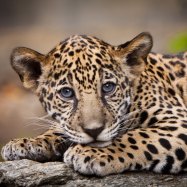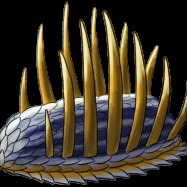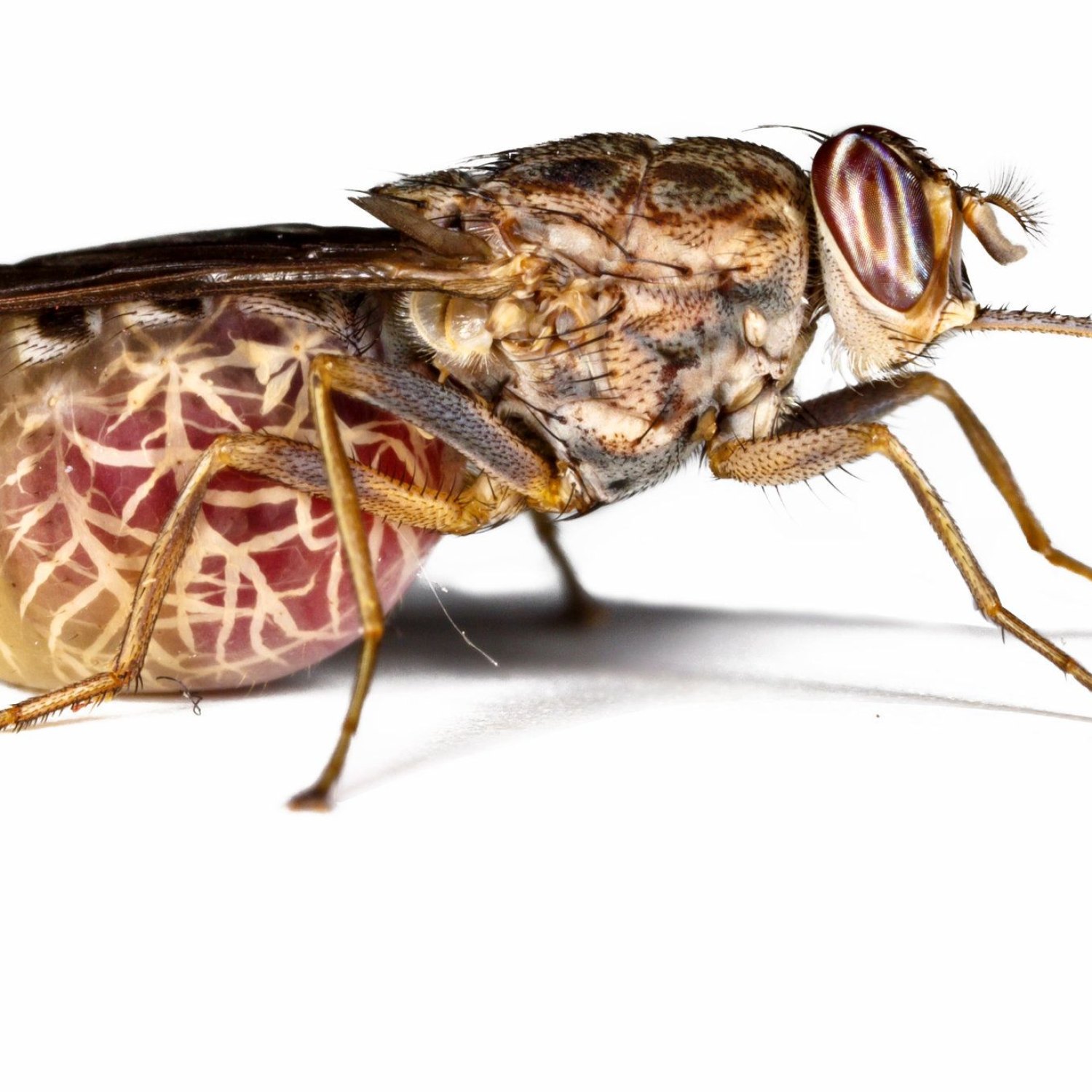
Tsetse Fly
7-17 millimeters
Do you know that Tsetse Flies are exclusive to Africa? These tiny creatures measure between 7 to 17 millimeters and are known for their slender body and long legs. Belonging to the Glossinidae family, they pose a threat to humans and animals alike with their painful bites and transmission of deadly diseases. Protect yourself and your animals by staying away from these pesky flies.
Animal Details Summary:
Common Name: Tsetse Fly
Kingdom: Animalia
Habitat: Woodlands, savannahs, and thickets near water sources
The Tsetse Fly: A Notorious Bloodsucker of Sub-Saharan Africa
For many people, the idea of a fly is associated with buzzing, pesky insects that are more of an annoyance than a threat. However, there is one species of fly that is far from harmless – the Tsetse Fly. This infamous insect, also known by its scientific name Glossina, has been plaguing Africa for centuries, and its reputation as a bloodsucker has earned it a well-deserved spot on the list of fascinating yet dangerous creatures.Journey to the Kingdom of Animalia
The Tsetse Fly, like all other organisms, belongs to the Kingdom Animalia Tsetse Fly. This kingdom is characterized by organisms that are multicellular, heterotrophic, and exhibit different body plans and developmental patterns. The Tsetse Fly's journey to this kingdom started with its ancestors, which were single-celled organisms that gradually evolved into more complex forms.The Phylum of Arthropoda and the Insecta Class
Once the Tsetse Fly became a part of the Animal Kingdom, it then belonged to a diverse group of organisms known as the Phylum Arthropoda. This group includes all invertebrate animals with segmented bodies and jointed appendages. Insects, crustaceans, and arachnids are all members of this phylum. The Tsetse Fly falls under the Insecta class, which means it has three pairs of jointed legs, a segmented body, and a pair of antennae.The Tsetse Fly's Order and Family
As an Insecta, the Tsetse Fly also falls under a particular order – Diptera, meaning "two-winged." The Diptera order includes all flies, mosquitoes, and gnats. This order is well-known for its members' ability to fly, and the Tsetse Fly is no exception Terrier. It has two wings that it flutters at a rapid rate, making it one of the fastest flying insects in the world.The Tsetse Fly's family is called Glossinidae, which is derived from its scientific name, Glossina. This family is unique to the Tsetse Fly and includes 31 different species of this bloodsucking fly.
A Habitat Fit for a Tsetse Fly
The Tsetse Fly is a resident of the woodlands, savannahs, and thickets near water sources in sub-Saharan Africa. It prefers warm and humid climates, making Africa the perfect home for this species. The Tsetse Fly is especially prevalent in the Congo basin, but it can also be found in other African countries, ranging from Senegal to South Africa.Feast or Famine: The Tsetse Fly's Feeding Method
The Tsetse Fly is infamous for its feeding method – bloodsucking. This fly, like most other insects, feeds on plant nectar as a source of energy. However, female Tsetse Flies require a blood meal to produce their eggs. When in search of a meal, the Tsetse Fly relies on its sharp, slender proboscis, which it uses to pierce through the skin and suck the blood of mammals, including humans. Once it finds its victim, it will remain attached to the skin for several minutes, feeding until it is full.Sub-Saharan Africa's Main Pest: The Tsetse Fly
The Tsetse Fly is notorious for being a harmful insect. However, its negative impact goes beyond its bloodsucking habits. These flies transmit a dangerous disease called trypanosomiasis, also known as African sleeping sickness. The disease is caused by a parasite that is spread through the fly's saliva as it feeds. If left untreated, trypanosomiasis can lead to a variety of debilitating symptoms, including fever, fatigue, and ultimately, death.The Geographical Distribution of the Tsetse Fly
The Tsetse Fly's geographical distribution is limited to sub-Saharan Africa, as it does not have the ability to survive in environments with low humidity. This makes it a significant problem for the region, as it is estimated that the Tsetse Fly covers an area of approximately 10 million square kilometers.African Roots: The Tsetse Fly's Country of Origin
As the Tsetse Fly is endemic to Africa, it is safe to say that this continent is its country of origin. The fly has been a part of Africa's ecosystem for centuries, evolving alongside other African species and becoming an essential part of its delicate balance.An Unassuming Yet Distinct Appearance
At first glance, the Tsetse Fly may not appear to be anything special. It has a body length that ranges from 7 to 17 millimeters, making it similar in size to other flies. Its body shape is slender, with long legs that allow it to move efficiently. However, upon closer inspection, its coloration is what sets it apart. The Tsetse Fly can be brown, gray, or black, with distinct markings on its wings.The Role of the Tsetse Fly in African Culture
For many people living in Africa, the Tsetse Fly is more than just a pest – it is a part of their culture and history. In certain African tribes, the fly is seen as a symbol of fertility and prosperity. However, in other cultures, the Tsetse Fly is seen as a potential threat and a cause for concern.The Sky Is Not the Limit for the Tsetse Fly
Interestingly, the Tsetse Fly played a role in the development of another insect – the fruit fly. Scientists studying fruit flies have used the Tsetse Fly's genetics to map the fruit fly's genome. This research has led to a better understanding of the fruit fly's behavior and biology, helping scientists find more effective ways to control fruit fly infestations.Conclusion
In conclusion, the Tsetse Fly is a fascinating yet dangerous insect that has been a part of Africa's ecosystem for centuries. From its humble origins to its unique habitat and feeding method, the Tsetse Fly has captivated the attention of scientists and the general public alike. Its notoriety as a bloodsucker and disease-spreading pest has made it a challenging species to control. However, the Tsetse Fly's impact goes beyond its negative reputation, as it has also played a role in scientific advancements. Ultimately, the Tsetse Fly serves as a reminder of the delicate balance of nature and the importance of understanding and respecting all creatures, big and small.

Tsetse Fly
Animal Details Tsetse Fly - Scientific Name: Glossina
- Category: Animals T
- Scientific Name: Glossina
- Common Name: Tsetse Fly
- Kingdom: Animalia
- Phylum: Arthropoda
- Class: Insecta
- Order: Diptera
- Family: Glossinidae
- Habitat: Woodlands, savannahs, and thickets near water sources
- Feeding Method: Bloodsucking
- Geographical Distribution: Sub-Saharan Africa
- Country of Origin: Africa
- Location: Africa
- Animal Coloration: Brown, gray, or black
- Body Shape: Slender body with long legs
- Length: 7-17 millimeters
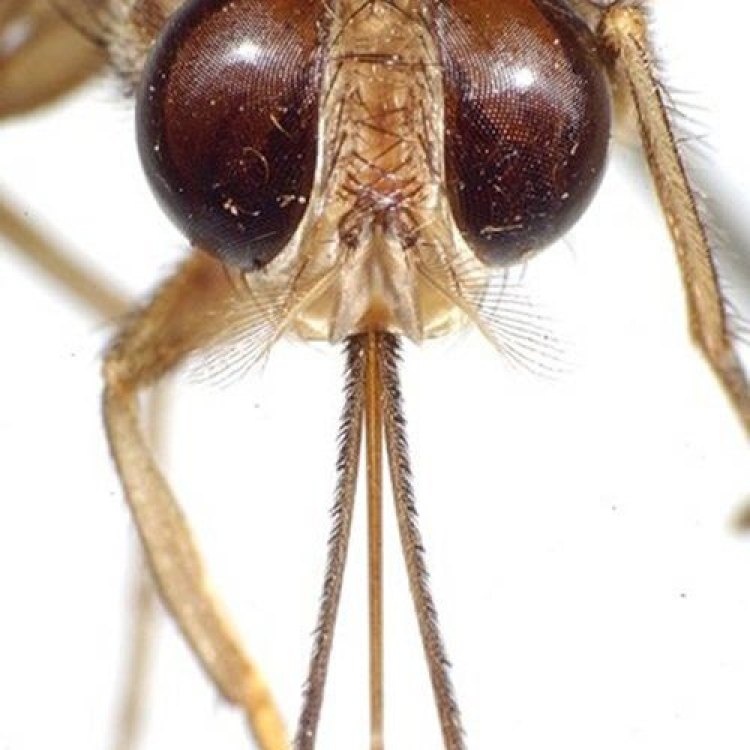
Tsetse Fly
- Adult Size: Small to medium-sized
- Average Lifespan: 3-4 weeks
- Reproduction: Sexual
- Reproductive Behavior: Mating occurs during blood meals
- Sound or Call: No specific sound or call
- Migration Pattern: No regular migration pattern
- Social Groups: Solitary
- Behavior: Active during the day, rest at night
- Threats: Habitat loss, climate change, insecticides, parasitic infections
- Conservation Status: Not evaluated
- Impact on Ecosystem: Tsetse flies are vectors for the protozoan parasite causing the disease trypanosomiasis
- Human Use: None
- Distinctive Features: Long mouthparts, large eyes, and a distinct wing venation pattern
- Interesting Facts: Tsetse flies are the primary vectors of African trypanosomiasis or sleeping sickness
- Predator: Lizards, birds, and other insects
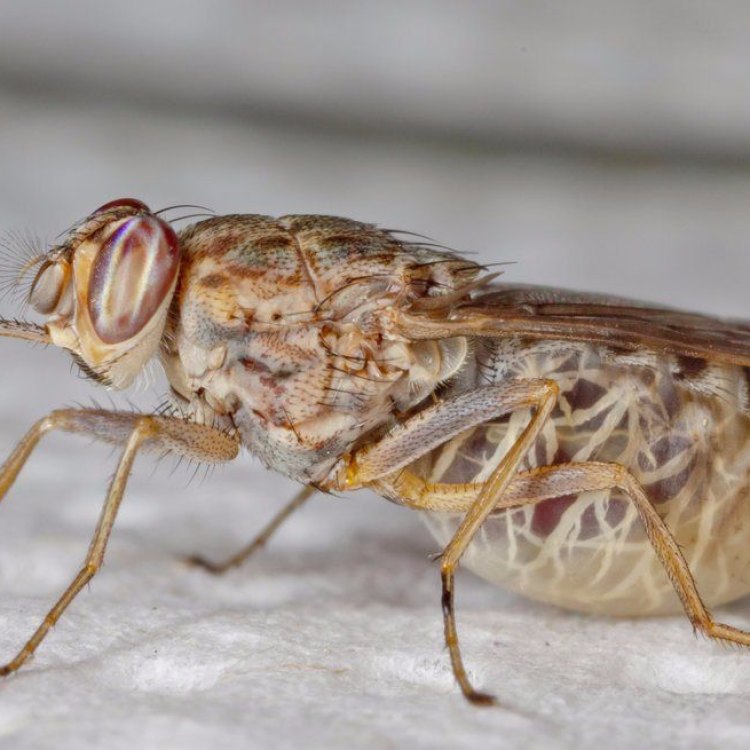
Glossina
The Tsetse Fly: A Small But Notable Insect
When we think of dangerous predators, insects are not usually the first thing that comes to mind. However, there is one tiny insect that has the potential to cause great harm to both humans and animals – the tsetse fly. This small but notable insect has a unique life cycle, behavior, and impact on the ecosystem. In this article, we will explore the various aspects of the tsetse fly, from its appearance and behavior to its role as a vector for a deadly disease PeaceOfAnimals.Com.Appearance and Size
The tsetse fly, also known as Glossina, is a small to medium-sized insect, measuring only 6-14 millimeters in length. This size may seem insignificant, but their impact is anything but. Their most distinctive feature is their long mouthparts, which they use to feed on the blood of vertebrate animals, including humans. This is a characteristic shared with other biting insects like mosquitoes and horseflies.In terms of appearance, tsetse flies have large eyes, often described as "bulging" or "prominent." They also have a distinct wing venation pattern, making them easily recognizable among other fly species. While their appearance may not be as striking as other insects, their role in the ecosystem is crucial.
Average Lifespan and Reproduction
The average lifespan of a tsetse fly is between 3-4 weeks. During this short period, they can reproduce multiple times, with a female fly producing one offspring at a time Tusoteuthis. This may not seem like a significant number, but considering the number of tsetse flies in an area, their population can grow exponentially.Tsetse flies reproduce sexually, meaning both male and female flies must come together for mating to occur. Interestingly, the mating behavior of tsetse flies is quite unique. Unlike other insects, mating does not occur randomly. Instead, it happens during blood meals. In simpler terms, tsetse flies mate while feeding on their host's blood. This behavior is important as it ensures the continuity of their species in a resource-scarce environment.
Social Behavior and Migration
Tsetse flies are solitary insects, and they do not form social groups like other fly species. They are most active during the day, with specific peak periods depending on the species and location. However, they rest at night, hiding in cool, shaded areas. Unlike other insects, tsetse flies do not have a regular migration pattern. They tend to stay in the same area unless environmental conditions force them to move.Threats to the Tsetse Fly Population
Despite their potential to cause harm, tsetse flies face their own set of threats. The loss of their natural habitat due to deforestation is a significant threat to their population. Climate change is also a considerable concern, as it alters their environment and biological mechanisms, affecting their reproductive and feeding patterns.Moreover, the use of insecticides to control other pests and insects also poses a threat to tsetse flies. These chemicals can sometimes kill this vital insect, affecting the balance of the ecosystem. Additionally, parasitic infections, such as Wolbachia, can also have a significant impact on tsetse fly populations. These bacteria can affect the reproductive capabilities of female flies, further reducing their numbers.
Conservation Status and Impact on Ecosystem
Despite their small size, tsetse flies play a vital role in the ecosystem. They act as pollinators, contributing to plant growth and reproduction. They also serve as a source of food for other animals, such as lizards, birds, and other insects.However, the most significant impact tsetse flies have on the ecosystem is their role as vectors for the protozoan parasite Trypanosoma, which causes African trypanosomiasis, also known as sleeping sickness. This disease affects both humans and animals, causing severe symptoms such as fever, headaches, and fatigue, and can even be fatal if left untreated.
Human Interaction with Tsetse Flies
Unlike other insects, human use of tsetse flies is non-existent. They do not have any economic importance and are not used in traditional medicine or any other human activities. Instead, their interactions with humans are mostly harmful, through the spread of the disease trypanosomiasis.However, efforts are being made to control the tsetse fly population, primarily through the use of insecticides and traps. These measures aim to reduce the risk of disease transmission and protect both human and animal populations.
Interesting Facts about Tsetse Flies
While tsetse flies may not be the most popular or well-known insects, there are still some interesting facts about them that are worth mentioning. For instance, tsetse flies are the primary vectors of African trypanosomiasis, making them responsible for thousands of deaths every year. They are also the only insects that can transmit this deadly disease, making them a significant threat to both human and animal populations in sub-Saharan Africa.Another interesting fact is that tsetse flies do not make any specific sound or call, unlike other insects. This makes them difficult to detect, especially when resting, and adds to their ability to spread disease unknowingly.
Predators of Tsetse Flies
Despite being known as a dangerous insect, tsetse flies also have predators of their own. These include lizards, birds, and other insects such as spiders and wasps. These predators play a role in keeping the tsetse fly population in check and preventing the spread of disease.In Summary
The tsetse fly may be a small insect, but its impact on the ecosystem and human health cannot be ignored. Their unique behavior and role as vectors for trypanosomiasis make them a species worth studying and conserving. Efforts must be made to protect not only the tsetse fly population but also the human and animal populations affected by their presence. As humans continue to interact with the environment, it is crucial to understand and recognize the importance of all species, no matter how small they may seem.
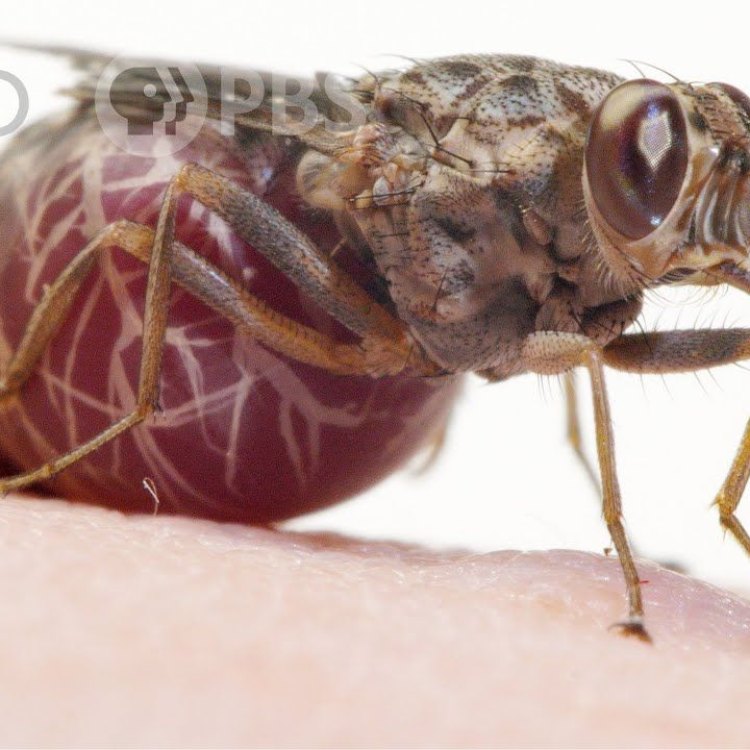
The Tsetse Fly: A Notorious Bloodsucker of Sub-Saharan Africa
Disclaimer: The content provided is for informational purposes only. We cannot guarantee the accuracy of the information on this page 100%. All information provided here may change without prior notice.

